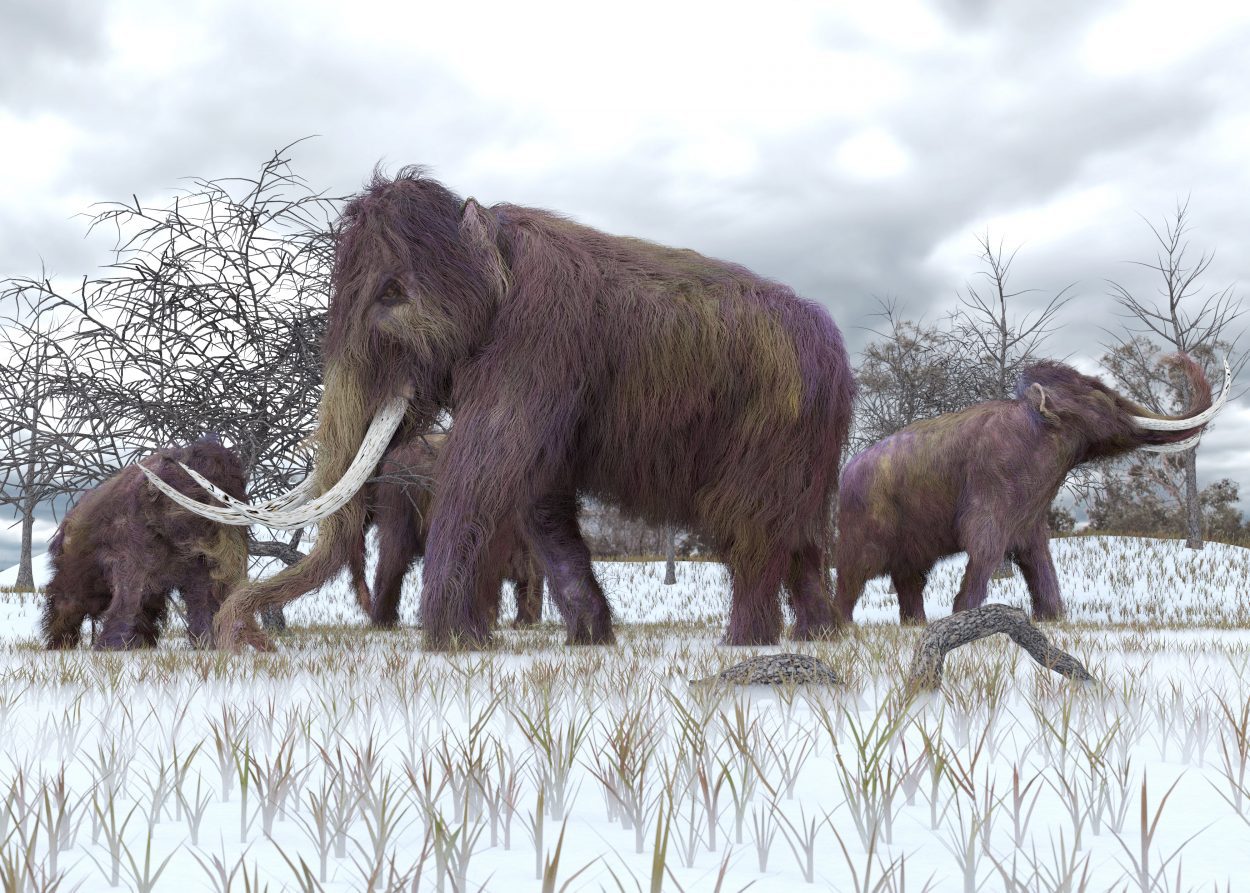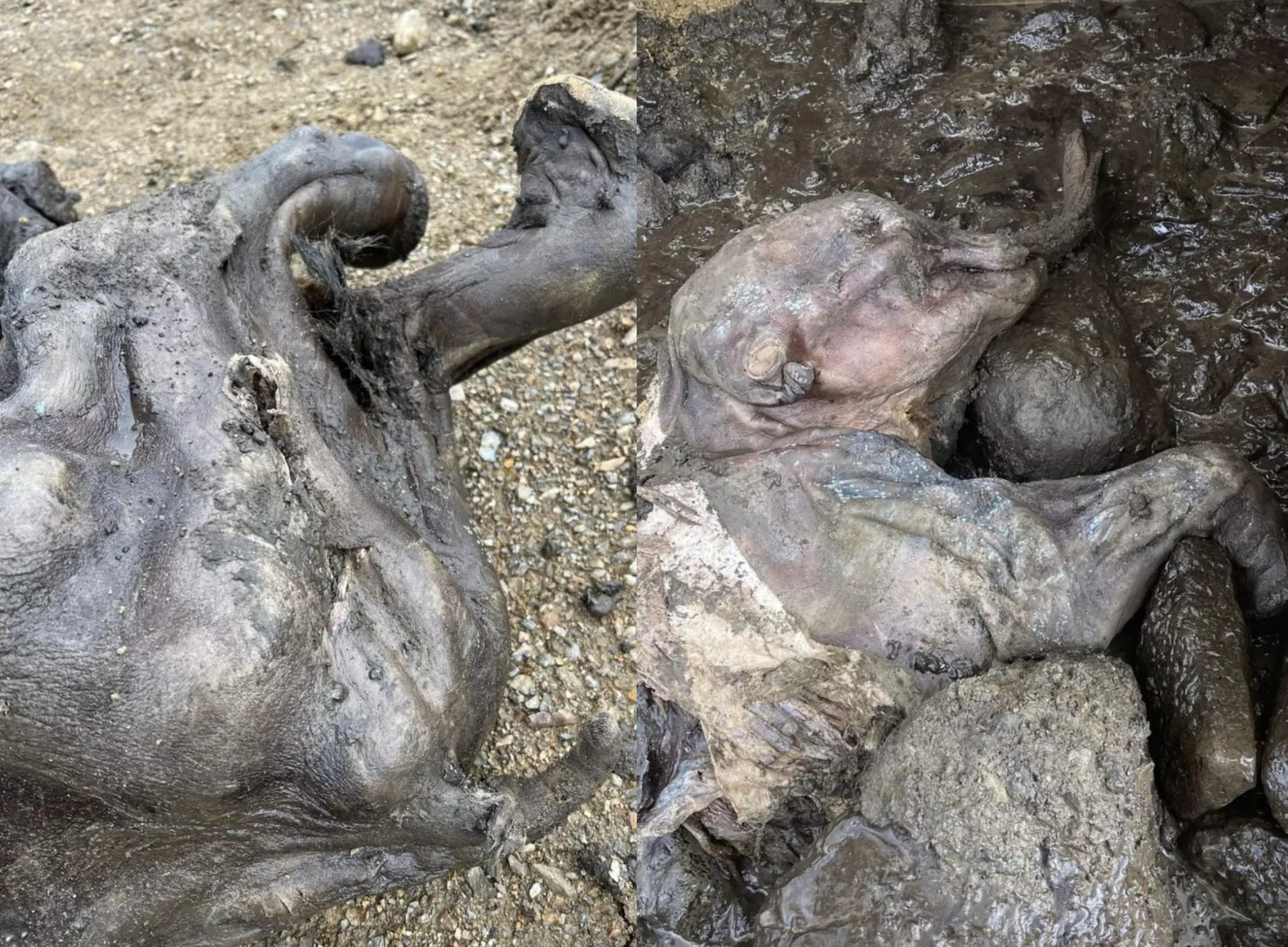A preserved baby mammoth has been discovered by gold miners in the Klondike gold fields, located within the traditional tribal territory of the Trʼondëk Hwëchʼin in the Yukon, Canada.
Trʼondëk Hwëchʼin Elders named the mammoth calf “Nun cho ga”, meaning “big baby animal” in the Hän language, and has been described as the most complete mammoth found in North America.
The specimen is a woolly mammoth (Mammuthus primigenius), an extinct species of mammoth that lived during the Pleistocene until its extinction in the Holocene epoch. The species are among the most studied of any prehistoric animal thanks to other specimens being found frozen in Siberia and Alaska.
Woolly mammoths had very long tusks (modified incisor teeth) and were roughly the same size as modern African elephants. Adult males had a shoulder height of between 2.7-3.4 metres and weighed up to 6 metric tons, whilst adult females reached 2.6–2.9 metres in shoulder heights and weighed up to 4 metric tons.

Woolly mammoths declined at the end of the Pleistocene, disappearing throughout most of its mainland range, although isolated populations survived on St. Paul Island until 5,600 years ago, on Wrangel Island until 4,000 years ago, and possibly (based on ancient eDNA) in the Yukon up to 5,700 years ago.
The calf is a female that was frozen in permafrost over 30,000 years ago, a period when mammoths, wild horses, cave lions and giant steppe bison roamed the Yukon. Nun cho ga is similar in size to “Lyuba”, a 42,000-year-old calf discovered in Siberia in 2007 and “Effie”, a partial calf found in 1948 at a gold mine in interior Alaska.
The discovery was made during excavations for gold in Eureka Creek along the foot of the Baker-Minook divide. Geologists from the Yukon Geological Survey and the University of Calgary recovered the remains in cooperation with the Klondike Placer Miners’ Association and the Trʼondëk Hwëchʼin.
Minister of Tourism and Culture Ranj Pillai said: “The Yukon has always been an internationally renowned leader for ice age and Beringia research. We are thrilled about this significant discovery of a mummified woolly mammoth calf: Nun cho ga. Without strong partnerships between placer miners, Trʼondëk Hwëchʼin, and the Yukon government, discoveries like this could not happen.”
Header Image Credit : Image Credit : Willem Middelkoop





